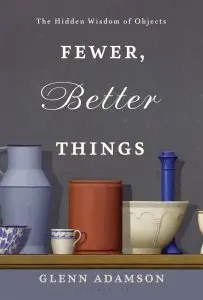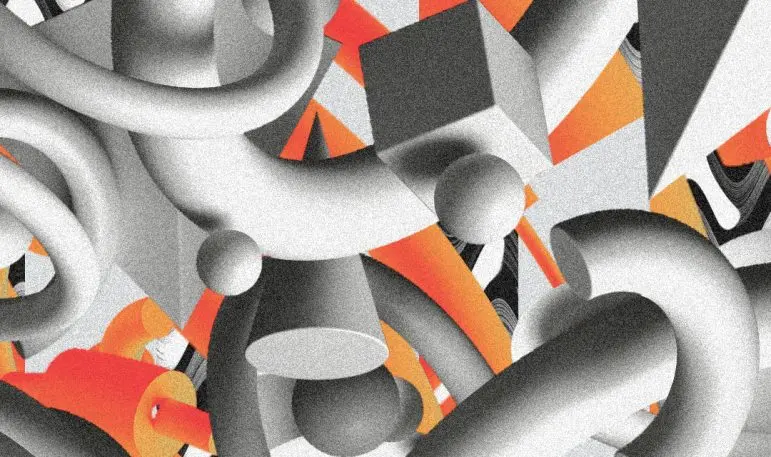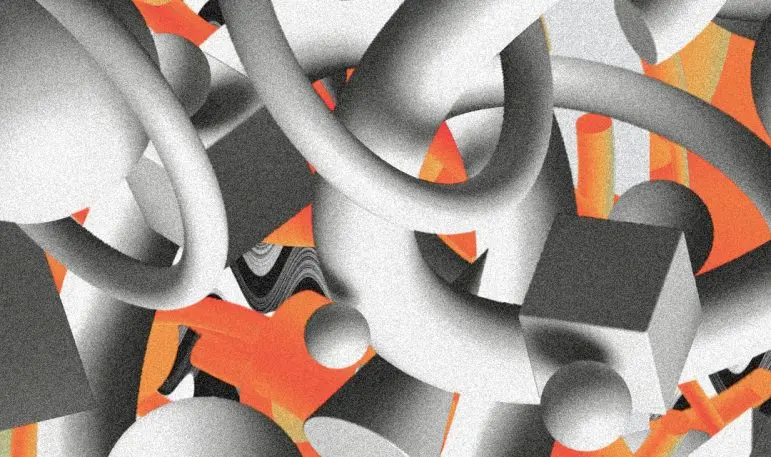Once you start thinking about achieving true sustainability, you begin to realize how challenging a goal it will be in the long run. Only two centuries have passed since the onset of the industrial revolution—an eye blink in the span of geological history—and already, we humans have managed to wipe out innumerable animal species, cause temperatures and sea levels to rise, induce freak weather patterns, and make the air in some cities unpleasant to breathe. And we are just getting started. Given the likely impact of ongoing global industrialization and continued population growth, it is hard to see how we can avert climate change of epic and perhaps disastrous proportions. There is no easy fix for this situation, but there can be little doubt that applying our collective material intelligence is an important part of the remedy. Not only will it allow us to devise more efficient and less damaging solutions to our own “life support,” appreciating materiality also encourages us to more highly value objects in general. By cultivating a cultural interest in fewer, better things, we can reduce our twin propensities toward overconsumption and waste.


This model of sustainability through high-quality things has the unfortunate reputation of being elitist. Even more unfortunately, that reputation is completely accurate. Few people can afford to fill their homes with finely crafted objects; insisting on excellence as our best pathway to ecological balance is simply impractical. This is a replay, at a different scale, of the problem faced by William Morris, the father figure of the Arts and Crafts movement. A committed socialist, he wanted to make beautiful things for all; instead, as he complained bitterly, he spent much of his time “ministering to the swinish luxury of the rich.” This conflict, between craft’s intended populism and its actual expense, is to some extent insoluble. Yes, luxury objects like beautifully carved furniture and handmade leather shoes are likely to last a long time. But if hardly anyone can afford them in the first place, it doesn’t make much of a difference in the quality of our overall lived environment, much less our survival on the planet. In fact, there is a sense in which luxury craft exacerbates our existing difficulties, because it implies that you can always tell a thing’s value by its price tag, which is simply not true.
An object does not have to be beautifully made in order for us to care about it. Fine craftsmanship is important, but it is not necessary. We can apply the affinity we bring to fine craftsmanship in a more general way. For example, we can appreciate the accessible rigor dreamt of by modernists in a mass-produced tubular steel chair (though in doing so, we should be curious about where the iron and other metals in the steel were mined, who made the chair, and so on). There is no one right way to furnish our environment. Any way of making and living with objects can be equally valid, so long as it serves our basic needs and we find meaningful connections within it.

A purposeful, even exaggerated return to a hardscrabble lifestyle can be seen in a recent trend called “freeganism,” in which people reshape their lives by scavenging and reusing waste rather than buying new things. Surprisingly, this turns out to be a lot easier in cities than it is in the countryside, because of the huge amount of waste that occurs in urban settings. One acquaintance of mine in London, Katharine Hibbert, decided to spend as little money as possible for a period of a year, then wrote a book about the experience. During her time living “on the margins of a wasteful society,” she acquired her furniture and home goods by Dumpster diving. She squatted in an abandoned building (which is legal in the U.K.). She even managed to take a vacation by hitching rides.
The neologism “freegan” is a play on the term “vegan,” and as that implies, much of the movement concerns food, rather than objects. Astonishing amounts of perfectly good food are thrown out every day: In the course of a year, according to Hibbert, Britain alone produces 20 million tons of edible waste. Why not eat it, instead of putting it in a landfill? One can combat these forces, but it requires an open mind. Hibbert lived like a frontier homesteader during her year of freeganism, though she was right in the middle of one of the world’s most populous cities. She became adept at evaluating food wherever she found it, so as not to become ill. She learned repair skills, restored scavenged possessions. Where others saw waste, she saw opportunity.

Freeganism is obviously not for everyone. Even Hibbert herself has not persisted in the lifestyle, though she has gone on to build a business called Dot Dot Dot, which works to house low-income residents in properties reclaimed from abandonment. But even those of us who are happy living within the usual norms of capitalistic society can learn from her experiment. Among the unexpected takeaways from her book, for example, is the importance of mutuality within squatter communities. In important respects, her life at the margins was different from that of others she encountered, or indeed homeless people, who also survive day to day with very little money. She was living in this way by choice, not necessity, and also knew that her undertaking would come to an end eventually. Yet those who had very little and did not necessarily expect their prospects to change tended to be very generous with her and with one another. Hibbert describes them as pooling their hard-won resources in ways that might never even occur to suburban residents. By and large, she found, squatters share.
In Lewis Hyde’s widely read book The Gift, there is a lovely passage that describes a custom in a French countryside café. “The patrons,” he writes, “sit at a long, communal table, and each finds before his plate a modest bottle of wine. Before the meal begins, a man will pour his wine not into his own glass but into his neighbor’s. And his neighbor will return the gesture, filling the first man’s empty glass.” The whole exchange might well happen wordlessly. Neither man has any more wine than he would otherwise have had. Yet to Hyde, this simple scene seems to capture something essential in human affairs: “In an economic sense nothing has happened. . . But society has appeared where there was none before.”

If we set Hyde’s example alongside Hibbert’s, we can see that they have something important in common: finding value in the valueless, as a way of creating common cause. Like the keeping of relics and the creation of controlled environments, this is another important way that we can infuse our lives with meaning. If we want to reshape our physical environment to be more humane and ecological, understanding it as an untapped resource of significance will be much more effective than luxury production or the top-down solutions that designers tend to offer us. Gifts are a great example of this found significance, because in one sense, whether or not they have economic value doesn’t even matter very much. An object given freely from one person to another may well have been purchased as a commodity, and it may eventually become one again. But in the moment of exchange, its value is primarily social. It is a bond, both material and personal.
There are factors to acknowledge here that complicate any simplistic understanding of altruism. First of all, gift giving is often attended by expectation: One doesn’t come empty-handed to a Christmas party. In many social contexts, such expectation can be extremely formalized, so much so that gifts have widely been employed as diplomatic tools. In the “potlatch” ceremonies of indigenous communities of the Pacific Northwest, for example, major events like the inauguration of a new chieftain are marked by the distribution of engraved copper plaques, blankets, and guns. In extreme cases, such rituals can be intensely competitive: Among the Kwakiutl peoples, conflicting claims of leadership were resolved through lavish giving and even the outright destruction of valuables en masse. By the mechanism of potlatch, individuals who had not previously enjoyed high status but who had become wealthy through trading could establish themselves as new authority figures—the Native American version of the nouveau riche. Feudal lords in medieval and Renaissance Europe, similarly, bestowed fabulous curiosities upon one another: mounted nautilus shells, coral specimens, and narwhal tusks (often thought to be unicorn horns at the time). We can be sure that the economic costs of such gifts were closely observed, and behind the expenditure lay clear indications of political intent.

Even so, because a gift doesn’t involve an exchange of money, it can stand for other ways of valuing things. This is a familiar idea, if not one that we often stop to consider deeply: A gift is precious not because of what it is, but because of who did the giving. When we wrap a birthday present, etiquette demands that we peel off the price tag but add a personal note. Think of a child picking up a pretty stone on the beach, then handing it to a parent or sibling. This is the sort of moment that Hyde celebrates: a material thing given personal consequence through a simple act of generosity. Just as souvenirs connect us metaphorically to past moments, to places once seen and now remembered, a gift connects us to a person in our lives. When really well chosen, it may even seem like a symbolic portrait of the relationship between giver and receiver.
Glenn Adamson is senior scholar at the Yale Center for British Art. This essay was excerpted with permission from Fewer, Better Things: The Hidden Wisdom of Objects (Bloomsbury, 2018).
Recognize your brand’s excellence by applying to this year’s Brands That Matter Awards before the early-rate deadline, May 3.
